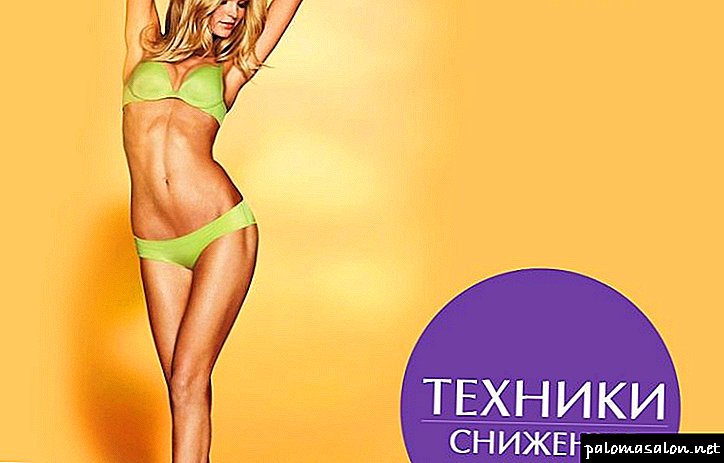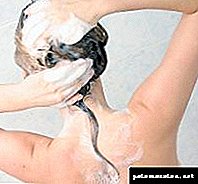It is believed that an increased level of testosterone in a man’s blood contributes to early baldness. Is it so?
The male hormone testosterone provides vegetation on the body and face, when another form of it can strip hair on the head.
In fact, isolated free testosterone will not affect the work and growth of hair follicles. To "start" early androgenic alopecia, a man must have a certain set of factors.
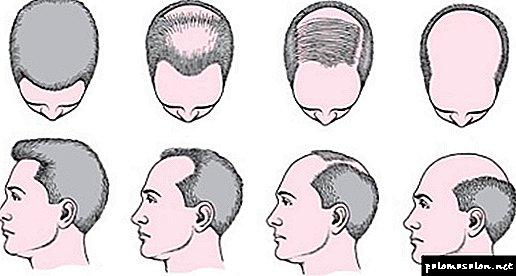
Fig. 1 - Variants of baldness in men associated with testosterone - androgenic alopecia.
How does testosterone affect hair loss?
Free testosterone can not affect certain receptors, as it has no relationship with them. Even with androgenic alopecia, testosterone levels may be within normal limits. The amount of its other fraction, dihydrotestosterone, has been increased.
How is baldness under hormonal effects?
The enzyme 5-alpha reductase is responsible for the conversion of testosterone to dihydrotestosterone. This enzyme, activating in the blood, is associated with the free fraction of testosterone. After the interaction of these two substances, two hydroxyl groups are attached to the testosterone molecule, which provides access to the bloodstream of the active fraction of dehydrogenase. The increased level of the latter in the hair follicle has a detrimental effect on the growth and development of the hair. In fact, this enzyme does not kill the hair and does not destroy the hair follicles. It gradually blocks the intake of nutrients with blood flow in the capillary system. Over time, the hair becomes thinner, resembles a gun. Hair becomes colorless and very thin. After a few years, the hair follicle ceases its activity altogether, even such hair disappears. In the affected follicle, the bulb itself does not suffer: it does not sclerose, but simply ceases to function. So this phenomenon is reversible.
Signs of androgenic alopecia
Baldness due to a combination of hereditary factors and increased dihydrotestosterone has its own characteristics. And according to clinical signs, we can assume the correct diagnosis.
Distinctive features of androgenic alopecia:
- characteristic areas of hair loss (parietal bumps and frontal region),
- staging of baldness characteristic of this type of pathology,
- increased levels of dihydrotestosterone,
- the presence of a hereditary chain (persistent tracking in the male half of one kind of baldness).
Stages of androgenic alopecia
The mechanism of hair loss has 7 stages:
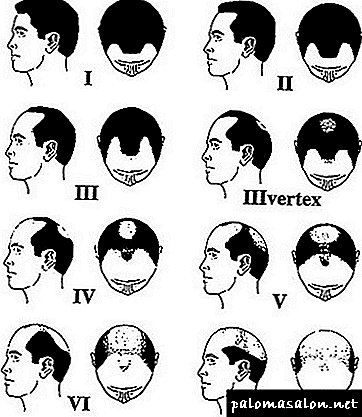 It begins with a shift of the hairline from the forehead and thinning of the hair in the androgen-dependent areas (frontal lobe and parietal bumps),
It begins with a shift of the hairline from the forehead and thinning of the hair in the androgen-dependent areas (frontal lobe and parietal bumps),- The hairline starts to form a triangle. In this case, the hair on the parietal zones, in the temples and forehead, partially fall out and thin
- The feeding of the hair follicles is stopped in the region of the parietal tubercles and there is a complete loss of hair in this zone (even vellus hair stops growing)
- The parietal zone is free of hair, hair begins to fall in the temples and forehead. At the same time between the two areas of baldness clearly visible area of thick hair, which delimits the pleshina,
- The hair on the top of the head becomes more sparse. The parietal zone of the bald area increases in size, the growth line at the temples moves further, which also increases the area of hair loss,
- Plens on the parietal mounds and the frontal-temporal region are delimited from each other only by a thin path of rare hair,
- The distinction between baldness zones disappears, they merge into one. Over time, it moves to the neck, back of the neck and the area above the auricles.
Specific therapy
Specific therapy involves the immediate elimination of the cause that caused baldness.
Modern medicine has developed drugs that can locally affect the hair follicle, improving its growth. The most famous drug is Minoxidil and other minoxidil-based drugs. Its mechanism of action aimed at improving hair growth is not fully understood. It is believed that the active substance minoxidil improves the nutrition of the hair, which provokes an improvement in its growth (read more about this here).
The second specific link that can be affected is 5-alpha reductase. But inhibitors of 5-alpha-reductase should be used only under the strict supervision of the attending physician, since these drugs have a number of side effects. They can provoke gynecomastia, slowing or stopping the maturation of sperm, and be a risk factor for malignant tumors. One of the representatives of 5-alpha reductase blockers is Finasteride.
Nonspecific Therapy
Nonspecific therapy is aimed at symptomatic treatment. Basically, external agents are used that will help improve the local blood supply, and help feed the hair from the outside with useful components.
Examples of non-specific therapy include:
- electrical effects on the scalp by D’arsonvalem,
- scalp massage
- acupuncture,
- active serum electrophoresis,
- applying nourishing hair masks.
Recently, a surgical technique has been developed to combat androgenic alopecia - hair follicle transplantation using the STRIP and FUE methods.
Baldness FAQ
Is it true that early bald men have a greater level of testosterone?
Testosterone itself has no effect on hair follicles. With a normal content of testosterone in the blood, its active form - dihydrotestosterone can be increased. This is due to a complex of reasons that are indicated in the article.
Is it possible to cure androgenic alopecia without resorting to special means?
Unfortunately, alopecia cannot be cured by folk methods or simply by hope and time.
Will vitamins help with androgenic alopecia?
Vitamins from baldness will only slightly slow down the thinning of the hair shaft.
Combing, wearing headgear contributes to hair loss?
Not. Combing on the contrary increases blood flow and improves the nutrition of the bulb.
Will hair transplant help? How long? How much is this procedure?
Hair transplant does not solve the problem. These new bulbs will begin to die. Comprehensive hormonal treatment with a transplant will permanently remove the problem of baldness. The procedure costs about 10,000 rubles.
Effect of Testosterone
Genetic predisposition, a decrease or increase in hormones, leads to male pattern baldness, associated with pathological changes or age-related processes. Testosterone is responsible for the growth of vegetation throughout the body. Its other form - dihydrostestosterone - leads to hair loss.
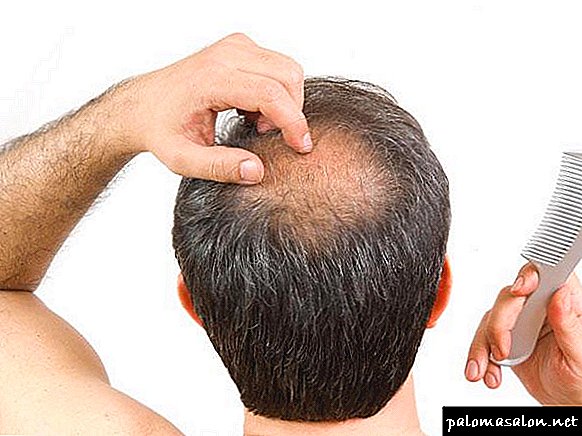
Certain factors affect the transformation of hormones. In the course of the research it was revealed that their level in balding and non-balding men is about the same. What matters is the individual sensitivity of the follicles, due to genetic predisposition.
Dropout mechanism:
- shrunk hair follicles,
- Thinning, brightening trunks,
- hair loss is observed.
Testosterone is important for protein synthesis in the tissues, is responsible for the processes of metabolism, blood circulation. It is found in the blood in different forms, it is necessary for building muscle fibers.
When interacting with specific enzymes, it is converted to dihydrotestenor. Its influence is many times stronger than the un-synthesized form. He is responsible not only for the growth and thickness of the scalp, but also for the male libido, the musculoskeletal system. Blocks the supply of nutrients, oxygen to the follicles. Under its action deteriorates the condition of the bulbs and tables, due to the reduction of muscle fibers around the bulbs.
The weakening of the roots leads to a decrease in density, destruction of the structure of the trunks. Gradually, the follicle ceases to function, but remains viable. Androgenic baldness is a reversible process that can be corrected.
Symptoms and diagnosis
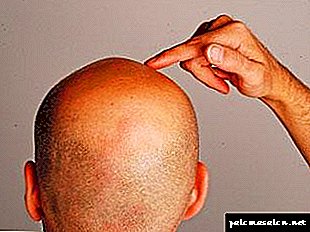 Hair loss and a violation of the level of male hormones are often caused by hereditary predisposition. It has its own characteristics, allowing to distinguish from other types of alopecia.
Hair loss and a violation of the level of male hormones are often caused by hereditary predisposition. It has its own characteristics, allowing to distinguish from other types of alopecia.
Androgenic alopecia:
- areas of hair loss - the region of the crown and forehead,
- thinning and loss occurs in stages,
- at the place of the fallen trunks appear fluff hair,
- the presence of this problem in the male half of the genus,
- increased dihydrotestosterone levels.
Related symptoms:
- deterioration of general well-being,
- emotional instability, irritability, apathy,
- fast fatiguability,
- replacement of muscle mass with fat deposits, weight gain,
- decreased libido.
Attention! When referring to a trichologist, the doctor using a micro video camera holds a trichogram per 1 square meter. see in the field of baldness. Then displays the image on the monitor, counts the number of trunks, evaluates the state of the epithelium.
Tests for alopecia:
- general blood analysis,
- blood chemistry,
- blood test for infection
- blood sampling to determine the level of iron,
- on thyroid hormones,
- tests for cortisol, adrenocorticotropic hormone,
- testosterone testing
- spectral analysis of hair,
- scalp biopsy - detection of fungal microorganisms.
If the results on dihydrotestosterone are increased, or the sensitivity of the bulbs to hormones is increased, androgenic alopecia is diagnosed. Consultation of an endocrinologist, a urologist, a neuropathologist, for a full examination and complex treatment of hormonal imbalance will also be required.
Causes of Testosterone Disorder
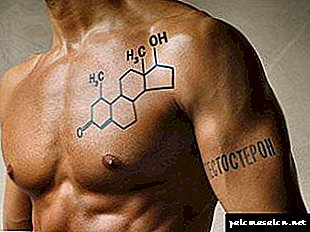 Both external and internal factors can influence the increase in the concentration of androgens. Among the common causes, the use of drugs or drugs to increase muscle mass. A huge impact on the balance affects lifestyle.
Both external and internal factors can influence the increase in the concentration of androgens. Among the common causes, the use of drugs or drugs to increase muscle mass. A huge impact on the balance affects lifestyle.
Lack of rest, chronic stress, fatigue, unhealthy diet, bad habits.
More than 60% of cases of androgenic alopecia are associated with a genetic predisposition. DNA lays the sensitivity of hair follicles to dihydrotestosterone. The stronger the root is exposed to its effects, the faster the loss occurs.
Impact of age on loss
In men aged 20–40 hormone secretion is cyclical. The maximum increase in testosterone is observed in the morning, the minimum concentration - from 15 to 17 hours. The increase in excretion occurs up to 30 years, then gradually goes down. With age, the production of estrogen increases, respectively, replacement processes occur.
After 40 years There are noticeable hormonal changes, there is not only hair loss. The emotional state is characterized as a midlife crisis.
By the years 50–60 the concentration is reduced by 2 times, compared with the amount of hormones produced in youth. One of the associated symptoms are difficulties in the fight against obesity, loss of muscle mass. Less pronounced cyclical increase / decrease of hormonal levels during the day. After 70 years, against the background of a decrease in the synthesis of male hormones, female ones are being actively produced.
How to normalize
If hair loss due to hormonal imbalance is detected, consultation with an endocrinologist is necessary. The doctor will conduct a comprehensive examination, prescribe medication. The duration of therapy is determined by the doctor, the first results will be noticeable only in a few months. The use of drugs for alopecia is effective in an integrated approach. Good results give physiotherapy - electrophoresis, acupuncture, massage, sessions using a laser.
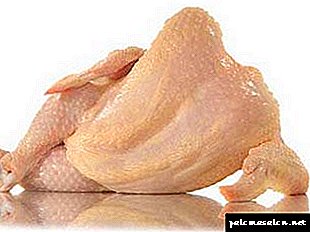 Measures to restore testosterone levels:
Measures to restore testosterone levels:
- eat lean meats, seafood, nuts,
- replace simple carbohydrates with complex ones
- give up flour products, sweets,
- Enrich the diet with fresh vegetables, fruits,
- Take a multivitamin complex, including vitamins A, E, C, B, D, minerals, arginine.
Particular attention should be paid to physical fitness. Strength training normalizes testosterone levels, helps to restore the muscular skeleton. Be sure to alternate workouts with rest, excessive exercise can lead to the opposite effect.
Attention! Full sleep, a stable emotional state, the rejection of bad habits - will stabilize the hormones. The fight against androgenic alopecia is a long process, it is difficult to predict the results.
How to prevent
The main way to prevent hormonal imbalance - compliance with the daily regimen. It is recommended to lie down and get up at about the same time. A full 8-hour sleep normalizes the level of androgens.
Prevention of testosterone fluctuations:
- Exposure to the sun activates the synthesis of vitamin D, which indirectly affects the synthesis of testosterone.
- Watch for weight, do not allow obesity. Do not use various supplements to increase muscle mass.
- Eat products to restore male hormones: fish, green vegetables, cabbage, nuts and seeds, seafood, bananas. Cottage cheese and lean meats also help avoid androgen fluctuations.
- It should be used with caution household chemicals and cosmetics. They often contain bisphenol (an analogue of estrogen). The use of lotions, gels, shampoos with this additive should be limited.
Androgenic alopecia requires a comprehensive diagnosis and drug treatment. In addition to therapy and physiotherapy, you will need to adhere to a healthy lifestyle.
Useful videos
Why does hair fall out?
Testosterone and baldness.
How does this affect baldness in men?
Why do men go bald when hormone levels change? Depending on the level of testosterone in the body of a man, the first changes will affect hairiness in different parts of the body. First of all, problems will begin to appear on the beard, head and chest. Later, armpits, legs, back and scrotum may suffer. Note that with a low level of testosterone, the hair falls out, and the high one grows abundantly. Although there are exceptions.
 With an increase in testosterone levels in the body, the men's beard begins to grow stronger, faster. Usually, you have to shave every day, because the hair becomes coarse, it makes its way through the skin after a few hours. This phenomenon may be accompanied by the appearance of ulcers and wounds. If the hormone testosterone is undervalued, then the beard grows poorly, there are places on the face where there is no hair at all, bald patches can occur.
With an increase in testosterone levels in the body, the men's beard begins to grow stronger, faster. Usually, you have to shave every day, because the hair becomes coarse, it makes its way through the skin after a few hours. This phenomenon may be accompanied by the appearance of ulcers and wounds. If the hormone testosterone is undervalued, then the beard grows poorly, there are places on the face where there is no hair at all, bald patches can occur.
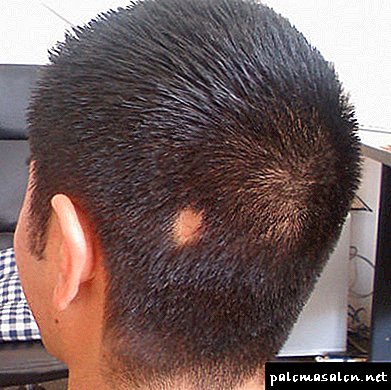 Regardless of the level of testosterone in the body of a man, the hair on his head will be the first to suffer. Alopecia is usually observed with a high or low hormone level. Because the hormone is inhibited by a special enzyme, turning into DHT, which leads to the destruction of hair follicles.
Regardless of the level of testosterone in the body of a man, the hair on his head will be the first to suffer. Alopecia is usually observed with a high or low hormone level. Because the hormone is inhibited by a special enzyme, turning into DHT, which leads to the destruction of hair follicles.
When testosterone is too high, the situation is different, because the hormone is unevenly distributed, affecting the growth of hair of the chest or back. And on the head begins some "avitaminosis."
 With low testosterone levels, male chest hair will be almost absent, will be thin and look like down. A high content of the hormone has a different effect - the entire chest to the abdomen is covered with hard and long hair.
With low testosterone levels, male chest hair will be almost absent, will be thin and look like down. A high content of the hormone has a different effect - the entire chest to the abdomen is covered with hard and long hair.
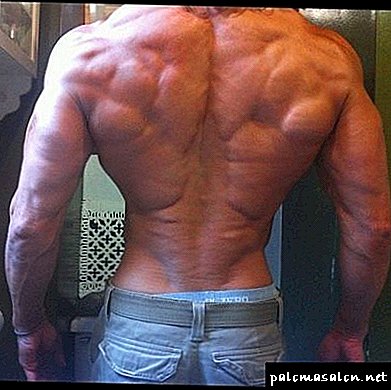 Under normal testosterone, the men on the back have almost no hair. This is characteristic only of Eastern nations. But the increased level of the hormone indicates problems when the hair grows particularly thick in the shoulders and along the spine.
Under normal testosterone, the men on the back have almost no hair. This is characteristic only of Eastern nations. But the increased level of the hormone indicates problems when the hair grows particularly thick in the shoulders and along the spine.
Communication of high levels of hormone and alopecia
Why do men grow bald at high levels of the hormone? Speaking about the high level of testosterone and hair loss in men, experts have not yet reached a consensus, have not found a relationship.
Because recent studies in America, conducted on several thousand patients, have shown that the level of the hormone in the bulb of the head is almost the same for everyone. Therefore, the growth of hair does not affect testosterone, and sensitivity to it.
Therefore, an overabundance can lead to the fact that testosterone will begin to inhibit and destroy the structure of the bulbs, especially when taking anabolic steroids, artificial drugs. Therefore, treatment with aggressive medications does not work.
Treatment due to the normalization of indicators
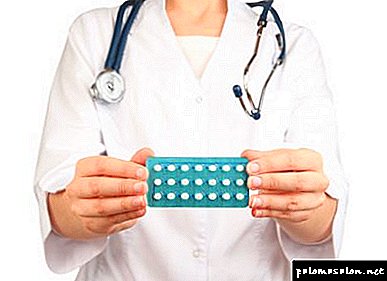 Immediately select that certain methods for the treatment of baldness due to unstable testosterone does not exist. Most often, therapy is aimed at turning the hormone into dihydrotestosterone with the help of hormonal pills. Treatment may not be safe, because stopping the medication leads to a return of symptoms.
Immediately select that certain methods for the treatment of baldness due to unstable testosterone does not exist. Most often, therapy is aimed at turning the hormone into dihydrotestosterone with the help of hormonal pills. Treatment may not be safe, because stopping the medication leads to a return of symptoms.
You also need to follow the following rules:
- Watch for food, refuse fatty and smoked food.
- Take care of hygiene.
- Change the comb.
- Choose natural, organic shampoos and hair conditioners.
- Give up bad habits.
You can also purchase decoctions and masks to stimulate hair growth.
Particularly effective inhibitors of 5-alpha-reductase - substances that stimulate the production of the hormone without adverse reactions of the body.
You can also use the following recipes:
- Rub castor oil or sea buckthorn oil in the hair roots, covering the head with a towel. Repeat the procedure three or four times a week.
- Rinse the hair with broth based onion peel, burdock or linden.
- Make a mask of yolk and vegetable oil (1 tablespoon). They need to be mixed and applied to clean hair, rubbing into the roots. Keep the mask for 20 minutes, and then rinse with clean water.
Conclusion
Hair loss or their abundant growth in men is associated specifically with the hormone testosterone, so the problem should be treated under the supervision of a physician. Indeed, in the future, problems can affect not only the scalp, but the functions of the genital organs, the immune system, the kidneys and the heart.
Remember that testosterone can differently affect the hair and the condition of the bulbs of each man, since the question is individual, the symptoms sometimes do not match. Therefore, be careful, lead a healthy lifestyle and do not forget about personal hygiene.
Testosterone and baldness
Experts have shown that for male pattern baldness there are three of the most important and common reasons:
- gene predisposition
- hormonal level (increased or decreased amount of testosterone),
- the age with which the production of the male sex hormone is also inextricably linked.
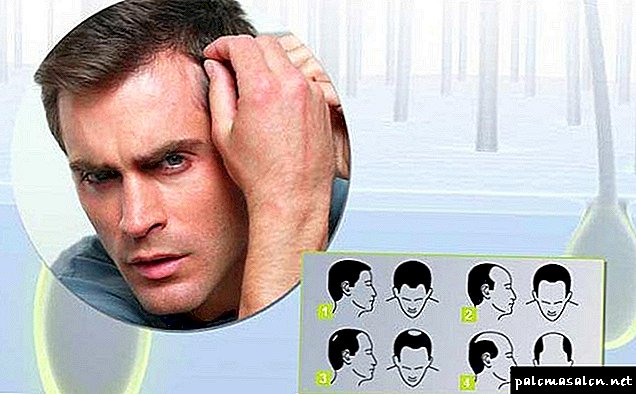
According to statistics, by the age of 45, a third of the male population of the planet are beginning to lose hair, and by the retirement age, every second person is bald in varying degrees of expression.
Early baldness is characteristic of men who have experienced intense hair loss from generation to generation. This does not mean that you will certainly become flaunting at 30, but your body is exposed to such a danger.
Testosterone is needed by all cells of the male body. Muscle tissues use free hormone to build up weight. But other tissues require the transformed and more active hormone dihydrotestosterone (DHT). It affects the libido, increases the potency and sexual desire, improves the quality of sperm. And sadly, adversely affects the hair.
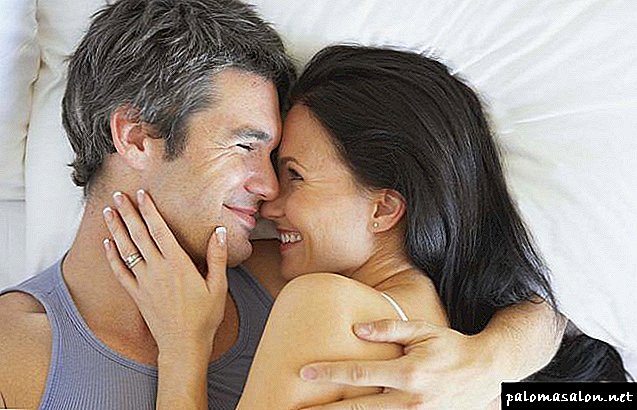
Under its influence, the scalp around the hair follicles becomes less elastic, which affects the growth of hair and their quality - they become thin and weak. Over time, the follicle stops working altogether, although it does not die. Theoretically, the resumption of its functions is possible.
Consequently, the conclusion is: the lack of hair in a man indicates his sexuality and irrepressible energy in bed. But studies have shown that potency and testosterone in this case are normal - as in bald men of the stronger sex and hairy.
Interesting fact. The less hair on a man’s head, the more they will grow in other places: in the nose, in the ears, on the chest and on the back.
Low testosterone and baldness are also possible. To a greater extent this applies to male-type hair: on the chest, legs, face. There are other unpleasant symptoms:
- deterioration of general well-being,
- fast fatiguability,
- mood swings, tendency to depression,
- loss of muscle mass on the background of total weight gain due to body fat,
- deterioration of sexual functions.
The effect of testosterone at a reduced level - baldness of the front of the head.
Hair loss treatment
Alopecia testosterone provokes in both high and low concentrations in the blood. Alas, there is no universal medicine that can completely rid a man of baldness. But to suspend the process means there. True, they are not safe for health, and can provoke a lot of trouble. But the choice is yours.
- Drugs that reduce the rate of hair loss. They block the production of dihydrotestosterone, significantly reducing its effect on the hair follicles. To date, there are two such tools. However, their regular use may cause a decrease in libido and impotence. A significant drawback for men in the reproductive period - these drugs affect the quality of sperm, damaging sperm.
- A means of local use. It is applied directly to the scalp, stimulates the blood supply to all layers of the dermis and improves the quality of the hair follicles, which affects hair growth. But there is a significant disadvantage - the drug acts exactly as long as it is used regularly. Contraindicated in people suffering from cardiovascular pathologies.
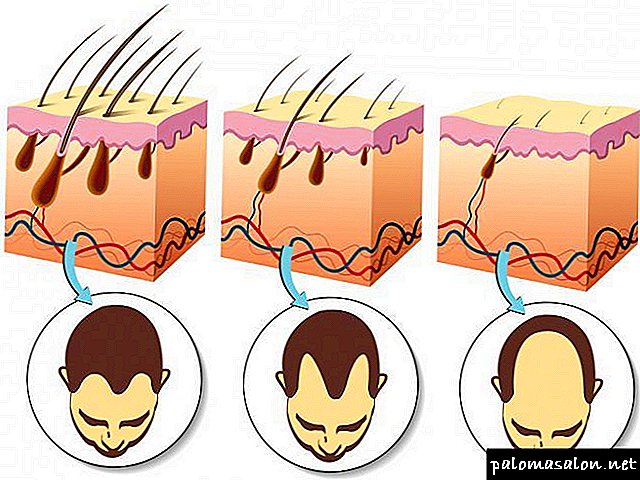
- Hair transplant from the back of the head to the bald spot. A method that requires repeated procedures, since in one session it is impossible to cover the entire area of the bald. A significant drawback is the high price and time frame.
- "Closure" bald - a radical surgical method. With the help of special technologies, the scalp in the area of baldness is stretched and then simply cut out. Let's face it - the option is not for the faint of heart.
- The use of stem cells is a new, expensive and little studied in terms of consequences for the general condition of the body.
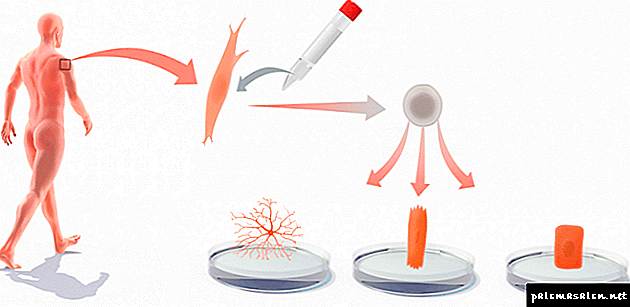
Contraindications and side effects
Surgical methods are used only in the hospital and are carried out by experienced trichologist surgeons. During the preparation for the planned procedure, they will conduct a full range of studies and will tell you whether you can carry out this or that intervention and what its consequences will be.
But before using any method, you need to contact an andrologist to determine the level of testosterone and find out the true cause of baldness. Take medications, even if they are local action or popular recipes that increase or decrease the level of testosterone, you need only under the supervision of a physician.

Contraindications include:
- blood diseases
- kidney and liver disease,
- cardiovascular pathologies,
- hypertension,
- oncological diseases,
- idiosyncrasy drugs
- history of allergic reactions (use with caution).
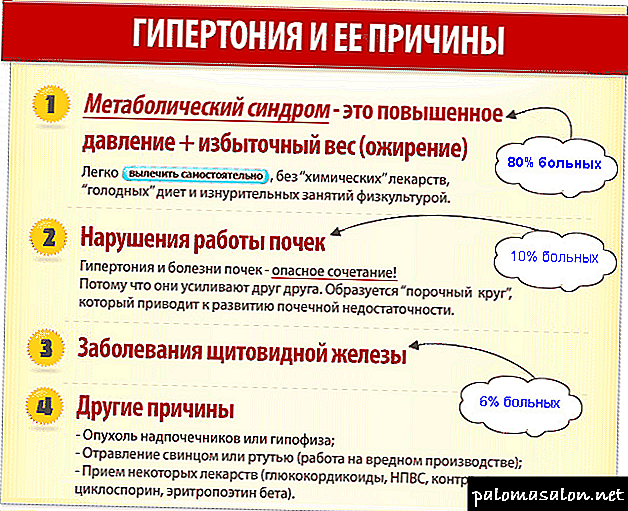
Also, drugs, especially increasing the level of testosterone, can cause the following side effects:
- manifestations of aggression, irritability and irritability,
- increase in blood pressure, up to hypertensive crisis,
- acne and puffiness
- increased hair loss.
It should be remembered that the drug can not be taken uncontrollably and unnecessarily. Consultation specialist will save you from many troubles. Indeed, in the case of testosterone, any changes in its level can cause serious problems, including the onset of cancer.
Signs and stages of androgenic alopecia

The fact that testosterone and hairiness in men are related, we found out. Now it's time to understand what are the signs of androgenic alopecia. Since a man may go bald for different reasons, respectively, and the overall picture of baldness will look different. So, it is for androgenic alopecia, which occurs against the background of increased DHT in the body, are characterized by such obvious signs:
- Hair loss in the areas of the parietal bumps and in the area of the forehead,
- Explicit tracking of heredity through the male line (monitored by a photo of the father, grandfather, great-grandfather, etc.),
- Increased concentration of DHT in the blood during the analysis,
- The balding process proceeds in the stages below.
So, for baldness, associated with hormones in the male body, the characteristic hair loss is not chaotic, namely stages. It looks like this:
- Stage I. Testosterone and alopecia here are just interrelated. Hair begins to thin out of the forehead. The line of their growth is shifted towards the parietal zone. Here the vegetation begins to thin out along the lateral parietal mounds. But it still looks fine, although the hair has become thinner and thinner to the touch.
- Stage II. Now, with the hair loss process on the parietal zone, the hairline is already forming a kind of triangle. Also, hair begins to thin out at the temples.
- Stage III. In the zone of the parietal bumps, the process of feeding the hair follicles is completely stopped. Even the thin fluffy hair that remained until that time finally falls out.
- Stage IV. The completely bald parietal zone is clearly delineated by the hair still growing on the head. But the hair now begins to thin from the side of the forehead and on the temples on the same principle as on the crown.
- Stage V. The vegetation on the crown is thinning and becoming fluffy, and the hairline on the temples and crown shifts higher and higher.
- Stage VI. The rest of the hair on the head has the appearance of a thin and sparse hair path.
- Stage VII. The boundaries of balding areas and still existing hair on the head completely merge. The remaining hair leaves its mouth with time.
Methods of treating and preventing baldness
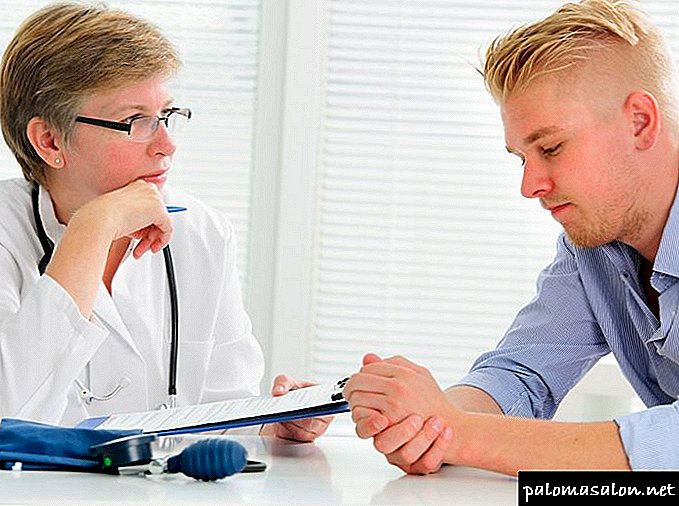
In order for testosterone and baldness in men not to have done their own cunning and not to deprive a man of full hair, you need to contact an andrologist and trichologist as soon as possible. A competent specialist will send a patient for a blood test for DHT and testosterone. If the diagnosis is confirmed, in order not to become completely bald, the treatment is carried out according to the following scheme:
- The appointment of dihydrotestosterone blockers to the patient. They actively slow down the action of DHT and thereby protect the hair follicle of the hair. With such a task today finest the drug Finasteride.
- Patients are prescribed antiandrogens. Drugs in this group stop testosterone baldness by stopping the connection of DHT molecules with receptors of the cells of each hair follicle on the head. In most cases, these are topical preparations. Spironolactone has proven itself well.
- Prescribe the patient means-hair growth stimulants. The effect of such drugs is directed to those hair follicles that have already succumbed to the effects of DHT. The components of the drugs actively renew the metabolic processes of the hair follicles, enhancing nutrition and hair growth.
Important: drugs from this group do not stop the detrimental effect of DHT on healthy follicles. Therefore, it is desirable to use hair growth stimulators specifically in complex therapy against pathology, in which bald testosterone.
Having figured out how testosterone affects hair growth, what is the principle of alopecia and what basic therapy looks like, it is worth understanding that to maintain the growth and density of hair you can additionally nourish the hair roots and strengthen them using popular methods. To enhance the blood flow in the area of the hair follicles, masks of mustard powder or red pepper can be made. They give a lasting effect, but under the condition of simultaneous treatment prescribed by a doctor. It is important to understand that all additional actions in relation to the hair and bald spot is also better to coordinate with your doctor.
Myths and truth about baldness
Many myths and delusions are associated with baldness - starting with the fact that the hair starts to fall out of standing on the head, ending with the fact that you can bald with the constant wearing of a cap. Most of these statements are not confirmed.
Given the importance of the problem of hair preservation, in recent decades a breakthrough has been made in studying the causes of baldness and ways to stop it. We can definitely say that we were lucky more than our grandfathers and fathers.
Who is balding faster?
It is believed that on average, there are between 100 and 150 thousand hairs on a person’s head, blonds have more of them, while brunettes and red ones have less. About 100 hairs fall out every day, but new ones grow in their place. If the hair does not grow, then the person becomes bald.
Approximately 25% of men who have reached the age of 30 have varying degrees of baldness. Among men who have reached the age of 60, more than 70% are either bald or are beginning to lose hair. The medical term for alopecia is alopecia.
Causes of hair loss
Hair loss can be caused by both external factors (stress, unhealthy diet) and internal, genetic, causes. More than 60% of cases of hair loss in men are associated with alopecia due to hereditary causes.
Earlier it was believed that baldness is transmitted through the female line, but recent studies show that the dependence is transmitted through the male line. If your father or grandfather had hair problems, your chance of balding is 2.5 above average.
Baldness and testosterone
Our DNA contains such a parameter as the sensitivity of the hair bulb to one of the forms of the male sex hormone testosterone - dihydrotestosterone. The stronger the hair root is exposed to it, the faster the hair dies.
Hair loss occurs gradually - hair becomes thinner, shorter and lighter. In the absence of proper treatment, after 10-12 years, the mouth of the follicles grows over with connective tissue, and they can no longer even produce gun hair.
Nutrition and Hair Loss
Other causes of baldness include, first of all, transferred diseases, medication use, stress, strict diets, as well as a lack of a number of trace elements - group B vitamins, vitamin D, zinc and selenium.
In addition, do not forget that the hair is a protein structure, and when there is a lack of protein in the diet, there is a significant weakening of both the hair and the hair bulb. In the long run, this can lead to baldness.
Does sport affect hair?
Despite the fact that strength training leads to an increase in testosterone levels, there are currently no studies showing that weight training can accelerate the development of baldness in men who are predisposed to hair loss.
On the contrary, there are data showing that a sedentary lifestyle and lack of an adequate level of physical activity can cause earlier hair loss in men. In any case, this topic needs further study.
Hair Loss and Steroids
As already mentioned, the lack of vitamins B and zinc can cause hair loss - given that the body actively consumes these microelements under power loads, it is important that they are adequately consumed with food, otherwise baldness may develop.
In addition, the use of steroid drugs, causing a sharp rise in testosterone levels in the body, in many cases leads to hair loss - this is another proof that steroids are not so harmless.
A predisposition to baldness is laid at the DNA level and is transmitted through the male line. Exercise loads probably do not accelerate hair loss. In the following materials, read about how to deal with baldness.
Testosterone - the cause of baldness: the truth or the myth
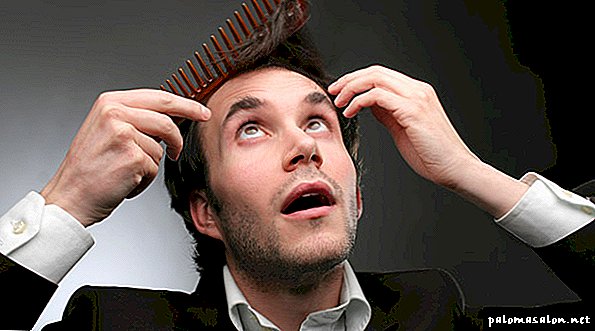
On average, about 1/3 of the male population experience alopecia by the age of 45. In 65 years, all men are subject to this phenomenon. At the same time, one should not forget about early baldness, which is associated with human genes, which are extremely sensitive to DHT (DHT). When transforming testosterone into DHT, it shrinks the hair follicle, and this leads to thinning and weakening of the hair. It is important to understand that the bulb does not completely die, so its growth can be restored.
Testosterone can be fixed in human blood in a variety of forms. Muscle tissue uses free-form hormone. Other tissues on the contrary require transformed dihydrotestosterone. It can be achieved with the participation of 5-alpha reductose. In addition, in the blood, he is able to mate with albumin.
Therefore, the total testosterone is only displayed after measuring all its forms and relationships.
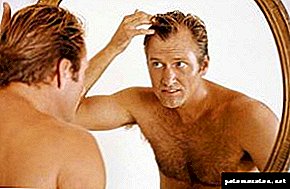 Some experts are of the opinion that early alopecia can comprehend a person not only because of heredity, but also because of the high concentration of testosterone in the blood. They draw on the experience of over 2,000 men, aged 41 and up to 47 years old. Experts have identified some connection between early alopecia, high testosterone levels and the risk of tumor neoplasms. But the data has not been confirmed.
Some experts are of the opinion that early alopecia can comprehend a person not only because of heredity, but also because of the high concentration of testosterone in the blood. They draw on the experience of over 2,000 men, aged 41 and up to 47 years old. Experts have identified some connection between early alopecia, high testosterone levels and the risk of tumor neoplasms. But the data has not been confirmed.
Studies show that men who are confronted with alopecia and those who have yet to face it, the level of "male hormone" at the same level. Therefore, the theory that a man, without a single hair on his head - an insatiable lover - is a myth. The fact is that with early alopecia, the hair follicle becomes hypersensitive to the effects of hormones.
A Michigan study found that for men who are early bald (30–35 years old) the risk of prostate cancer is significantly reduced.
The probability of balding men with hormone jumps
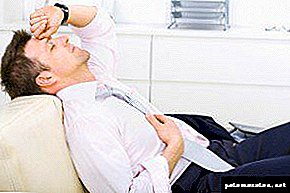 Low levels of testosterone can lead to baldness, but mostly the chest, face, arms, back and legs.
Low levels of testosterone can lead to baldness, but mostly the chest, face, arms, back and legs.
Also, you can fix:
- Very tired
- Stress.
- Sharp weight loss or, on the contrary, its addition.
- Breast growth
- Reduced libido and erections.
The Journal of Andrology is of the opinion that the cause of baldness is a failure in the hormonal system, which means that there is a direct relationship with free testosterone. It is a decrease in the concentration of this type of hormone leads to alopecia of the frontal part of men.
Testosterone is formed in the testes and the adrenal cortex, its concentration is about 11-33 nanomoles / liter, but only during normal development. It is a component of the process of the formation of male traits, which are manifested in sexual desire, the release of sperm, building muscle, etc.
Interestingly, the amount of testosterone is not transmitted to the offspring, but it is the hypersensitivity of the hair follicles to one of its forms, DHT, that is inherited.
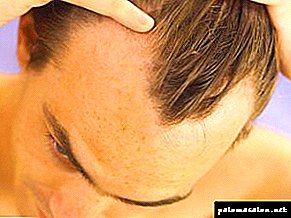 Baldness does not occur instantaneously, as well as changes in the level of hormones in the body of men, gradually hair:
Baldness does not occur instantaneously, as well as changes in the level of hormones in the body of men, gradually hair:
- Thins out.
- Discolored.
- It becomes shorter.
- Its growth slows down.
If you do not go to a doctor in time, then after a decade you can see that the follicle “nests” are overgrown and connective tissue has formed at the mouth of the orifices. In this situation, even the hair guns will not be able to get through, and the treatment will be meaningless.
There is no single way to treat baldness in men, which will provide a guaranteed result. Alopecia of this type is treated by preventing the conversion of the free form of the hormone to dihydrotestosterone. Used hormones, well-proven Finasteride. Since the bulbs are not completely extinct yet, there is a good chance to restore beautiful hair. But first, you should visit the doctor. For men, he will prescribe tests to detect hormone levels in order to understand what stage alopecia is at.
An extreme option for getting rid of baldness is hair transplantation. The option is quite painful and expensive, besides it takes many months to recover. For men, this is not the best option.
When does hair fall out?
The process of hair loss can be observed not only by men, but also by women. 100–150 hairs are lost during the day. First of all, they remain on the comb. Then, if you look closely, you can see them on personal items or on the bed.
Such a process is considered normal since hair has its own life span. In their place, new ones appear. Replenishment occurs if the health of a person is in perfect order.
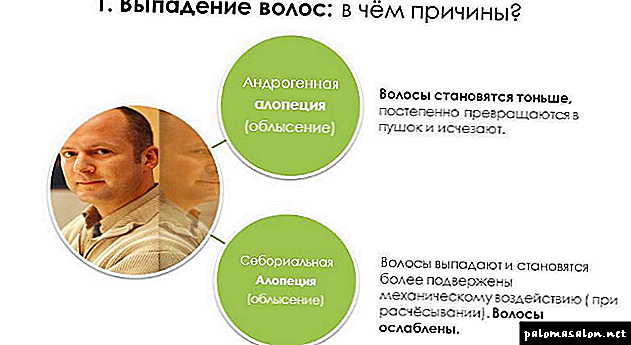
In men, everything happens a little differently. A significant part of it becomes bald by a certain age. Up to 25–30 years, the first changes are observed. Hair disappears on the forehead, crown, temechke. These are cases of male-type baldness whose scientific name is androgenic alopecia. For many males, this process is characterized by a genetic predisposition. Therefore, most people up to 45–60 years old become almost bald.
The effect of testosterone on the hair
For male-type baldness, the main sources are:
- genetic predisposition
- hormones,
- age.
What does testosterone have to do with everything, you should find out. It is believed that he is the main source of hair loss. But is it?
Testosterone performs the function of sexual activity, is responsible for the production of sperm, is responsible for the state of muscle mass and bones. In addition, it has an impact on some qualities of character, in particular, aggressiveness, assertiveness.
Testosterone is a hormone found in the blood. Muscles it is perceived in a free or unbound form. Other tissues need to convert testosterone. In the active form, it turns into dihydrotestosterone when exposed to the enzyme 5-alpha reductase, produced in the adrenal glands, prostate, scalp.

Being in the form of DHT, testosterone promotes hair growth in the face and body. But the genes of men with a certain heredity to early baldness are very sensitive to DHT.
Therefore, the hair growing on the head, it affects differently. At an elevated level, dihydrotestosterone does not give growth and development of hair on the head. But the hair bulb is not subject to complete destruction.
Nutrients from blocking by the enzyme do not enter the capillary system with the bloodstream. The hair bulb weakens, the active phase of growth is reduced. The process of gradual death of the hair follicles begins. They shrink to very small sizes. Of them grow hair like fluff, thin, fragile, lose their color.
Over time, the activity of such a hair follicle also ceases, this leads to the disappearance of the hair. It is characteristic that the bulb does not suffer, it ceases to function. As a result, new hair does not grow.
Based on this, the idea is traced that the link between testosterone and alopecia exists. But the influence of testosterone is controlled by genes, they either increase or decrease.
Forms of alopecia
Baldness, which occurs due to an increased level of dihydrotestosterone and hereditary factors, is characterized by its own characteristics. After a clinical examination, you can establish the correct diagnosis.

The most common is androgenic alopecia. Such features are peculiar to its form:
- hair loss occurs in characteristic areas, in particular, on the parietal mounds and the frontal part,
- This kind of pathology has stages of balding,
- DHT levels rise,
- heredity on the line of baldness.
In men suffering from androgenic alopecia, baldness stages are repeated with precision:
- the hairline begins to shift from the frontal part and the hair is thinned in the androgenic zones (frontal lobe, parietal hillocks),
- triangle is formed using hairline. There is a partial loss and thinning of hair in the parietal zone, on the temples, forehead,
- hair follicles that are located on the parietal hillocks do not receive nutrients. In this regard, the hair completely fall out, does not even grow fluff,
- crown area becomes bald, further loss is observed on the temples and forehead. Despite this, thick hair is visible on both sides of the bald patches,
- crown becomes rare. The size of the hairline in the parietal region increases, hair loss extends the growth line. It moves away from the temples,
- delimitation of bald patches is traced by a small strip with sparse hair,
- baldness zones are connected - after some time the zone spreads to the neck, occipital part, and auricle area.
Telogen hair loss
The next form is called telogen alopecia. It can develop in men who have experienced a severe stressful situation. In this case, the hair thin out evenly. At first they are in the “drowse” stage, they do not grow for a while, and the process of falling out does not stop. After stabilization of the situation, normal hair growth is possible.
Another type of alopecia is a focal form. Hair follicles suffer from an attack of their own immune system. The body and head are covered with separate bald areas, additional therapy is sometimes needed to restore the hairline.
Baldness Treatment Methods
Are there ways to prevent testosterone baldness, and what are they? Nowadays, standard and non-specific treatment is used.
Standard therapy deals with the elimination of the cause of the baldness.
In modern medicine, drugs are used with which hair growth is improved. Minoxidil is also popular, as well as the means that comprise minoxidil. How does its composition, to improve hair growth, is not finally known. Hair is better nourished, and this action enhances its growth.
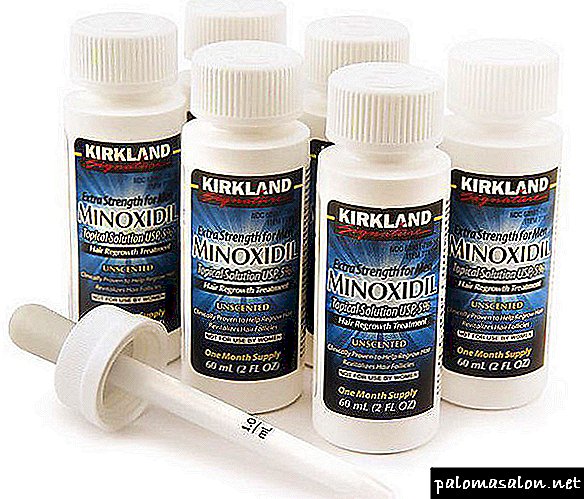
There is a drug that can block 5-alpha reductase. This includes Finasteride. It should be taken under the supervision of a doctor in order to avoid the occurrence of side effects.
Non-specific methods include symptomatic therapy. To improve local blood circulation and replenish hair with useful substances, external agents are used.
Non-specific treatment includes physiotherapy:
- the use of electrophoresis with active sera,
- head massage,
- nourishing hair masks
- acupuncture,
- use of Darsonval apparatus for electrical effects on the scalp.
In addition, a surgical hair restoration method was developed. Surgeons offer hair transplantation. Groups of hair follicles taken from the back of the head or temples are transplanted to the balding area. Modern surgery every year will improve the technique, to achieve the result will take more than one month.
You can use different methods of recovery, but hair loss depends on the level of dihydrotestosterone. Therefore, control is needed in order not to undergo other diseases of the malignant type. It should be said that testosterone is responsible for baldness.

 It begins with a shift of the hairline from the forehead and thinning of the hair in the androgen-dependent areas (frontal lobe and parietal bumps),
It begins with a shift of the hairline from the forehead and thinning of the hair in the androgen-dependent areas (frontal lobe and parietal bumps),
